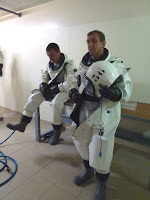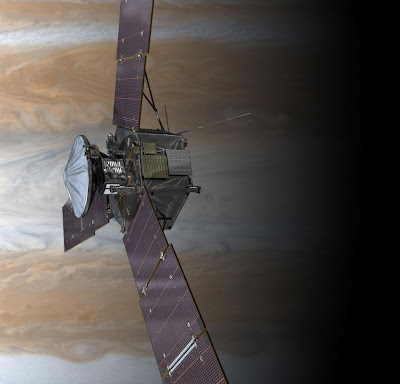Scientists from the California Institute of Technology (Caltech) have discovered panguite, a new mineral, embedded in a meteorite.
They believe that the mineral existed way before earth and other planets were formed.
The discovery was made while studying the Allende meteorite.
The Allende meteorite fell across the state of Chihuahua, Mexico in 1969.
More than 40 years later, the meteorite is still serving the scientific community as a rich source of information about the early stages of our solar system's evolution.
Scientists, analysing the Allende meteorite using a scanning electron microscope, were stunned to find a mineral prompting them to name it panguite. This mineral contains some amount of a new type of titanium oxide, never discovered before.
The panguite is named after Pan Gu, a giant from ancient Chinese mythology who, it is believed, established the world by separating yin from yang to create the earth and the sky.
"Panguite is an especially exciting discovery since it is not only a new mineral, but also a material previously unknown to science," said Chi Ma, scientist and director of the Geological and Planetary Sciences division's Analytical Facility at Caltech, in a statement.
Scientists claim that the Allende meteorite is the largest carbonaceous chondrite - a diverse class of primitive meteorites - ever found on our planet and is considered by many as the best-studied meteorite in history.
Till now, scientists have discovered nine new minerals, including panguite, in the Allende meteorite. Some of those minerals are allendeite, hexamolybdenum, tistarite, and kangite.
"The intensive studies of objects in this meteorite have had a tremendous influence on current thinking about processes, timing, and chemistry in the primitive solar nebula and small planetary bodies," said Professor George Rossman, scientist at the Caltech, in a statement.
Last year, another group of scientists discovered a new mineral called "Wassonite". Wassonite was discovered within the Yamato 691 enstatite chondrite meteorite.
Wassonite is a mineral formed from only two elements, sulphur and titanium, yet it possesses a unique crystal structure that has not been previously observed in nature, according to a Nasa report.
Caltech scientists are now studying panguite and other newly discovered refractory minerals. They believe that their study will help them know more about the conditions under which they were formed and subsequently evolved.
"Such investigations are essential to understand the origins of our solar system," said Ma.
They believe that the mineral existed way before earth and other planets were formed.
The discovery was made while studying the Allende meteorite.
The Allende meteorite fell across the state of Chihuahua, Mexico in 1969.
More than 40 years later, the meteorite is still serving the scientific community as a rich source of information about the early stages of our solar system's evolution.
Scientists, analysing the Allende meteorite using a scanning electron microscope, were stunned to find a mineral prompting them to name it panguite. This mineral contains some amount of a new type of titanium oxide, never discovered before.
The panguite is named after Pan Gu, a giant from ancient Chinese mythology who, it is believed, established the world by separating yin from yang to create the earth and the sky.
"Panguite is an especially exciting discovery since it is not only a new mineral, but also a material previously unknown to science," said Chi Ma, scientist and director of the Geological and Planetary Sciences division's Analytical Facility at Caltech, in a statement.
Scientists claim that the Allende meteorite is the largest carbonaceous chondrite - a diverse class of primitive meteorites - ever found on our planet and is considered by many as the best-studied meteorite in history.
Till now, scientists have discovered nine new minerals, including panguite, in the Allende meteorite. Some of those minerals are allendeite, hexamolybdenum, tistarite, and kangite.
"The intensive studies of objects in this meteorite have had a tremendous influence on current thinking about processes, timing, and chemistry in the primitive solar nebula and small planetary bodies," said Professor George Rossman, scientist at the Caltech, in a statement.
Last year, another group of scientists discovered a new mineral called "Wassonite". Wassonite was discovered within the Yamato 691 enstatite chondrite meteorite.
Wassonite is a mineral formed from only two elements, sulphur and titanium, yet it possesses a unique crystal structure that has not been previously observed in nature, according to a Nasa report.
Caltech scientists are now studying panguite and other newly discovered refractory minerals. They believe that their study will help them know more about the conditions under which they were formed and subsequently evolved.
"Such investigations are essential to understand the origins of our solar system," said Ma.





















































